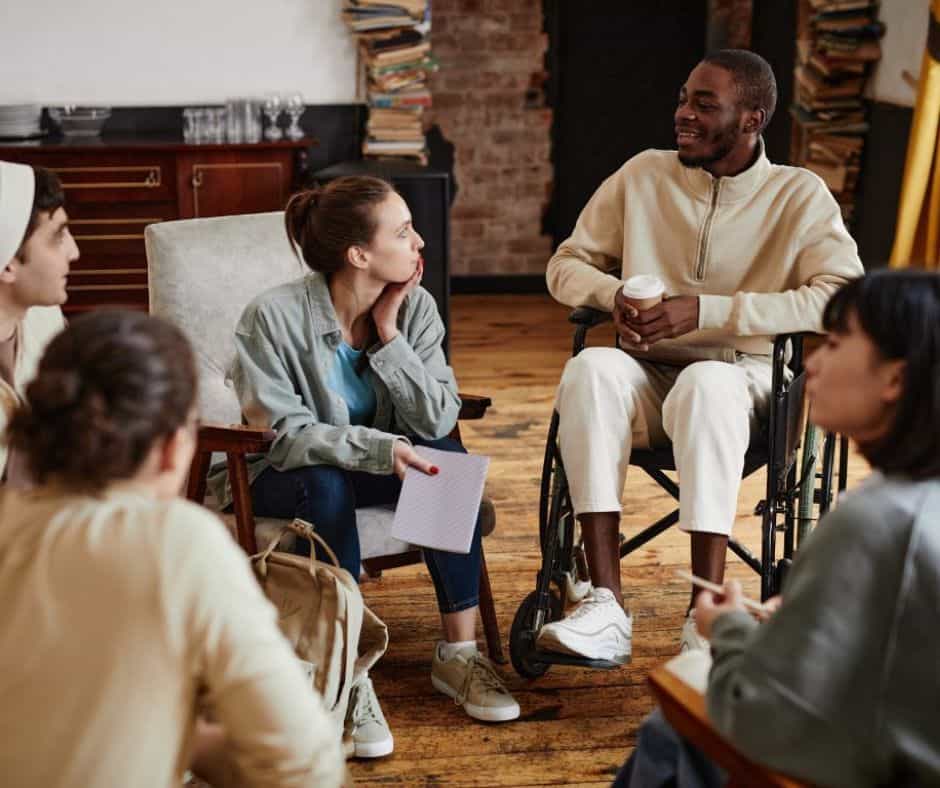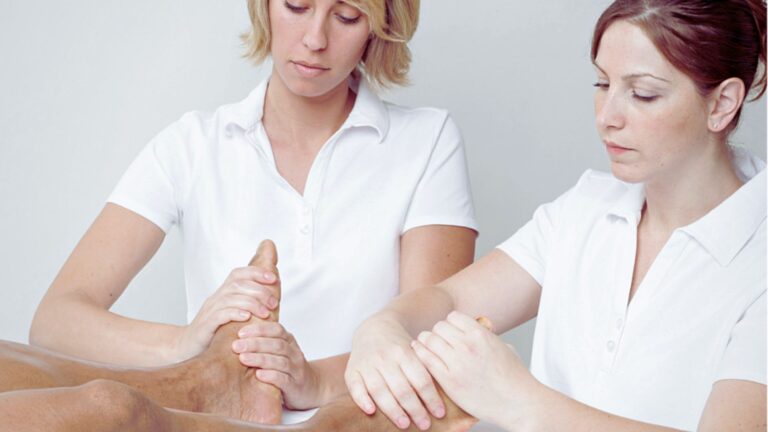Scaffolding in Massage Teaching: 5 Ways to Improve Student Learning
Introduction
Scaffolding in massage teaching refers to the temporary instructional support that teachers provide to students, helping them develop knowledge and skills. Scaffolding helps students bridge the gap between what they can do independently and what they could do with structured support. When we introduce students to new concepts or skills, we use a lot of scaffolding and gradually remove it as they develop competence. Ultimately, we aim for students to demonstrate knowledge and skills independently, without relying on our support or that of their peers.

When Great Teaching is Scaffolding
A critical goal for teachers is chunking content into manageable segments. This makes it easier for students to keep up with the flow of material, understand concepts, and begin encoding information into their memory.
Forms of Scaffolding in Massage Teaching
Scaffolding takes several forms, including excellent teaching, worked examples, peer learning, dual-coding aids, and study guides. Let’s discuss each of these forms of scaffolding in more detail. At the end of the article, you can download example study guides.
Great Teaching
Excellent teaching is a form of scaffolding because it tends to be structured and thoughtful. Accomplished teachers chunk content into manageable segments, speak about concepts fluidly, plan activities encouraging students to apply their learning, and regularly give feedback or check for understanding before moving on. Students feel safe and supported during classroom learning, helping them readily progress through learning objectives.
For example, if students are in early massage modules, great teachers ask students to come to a demonstration table to view one technique and then return to their exchange partners to practice. Students won’t proceed to the following technique until they have grasped the first one.
Students will likely feel confused if the teacher demonstrates several techniques in succession. They may misapply techniques or grasp only the last technique the instructor shows them.
Worked Examples
Providing worked examples is an important aspect of scaffolding in massage teaching. Worked examples are step-by-step demonstrations of how to solve problems or perform tasks. They reduce the effort spent on trial-and-error problem-solving and ensure students don’t learn or reinforce faulty thinking or skills. You’re using worked examples when demonstrating skills like conducting a client interview or sequencing massage techniques to address regional tension. Similarly, you hand out completed SOAP notes showing abbreviations related to markings on a human figure. In that case, you’re providing students with a worked example before asking them to complete their own SOAP forms.

Peer Activities Create Scaffolding for Student Learning
Peer learning (also called social learning) is any activity where students work together to achieve goals related to lesson content. During interactions, more knowledgeable and skilled peers provide scaffolding to less knowledgeable and skilled peers.
Peer Learning
Peer learning (also called social learning) is any activity where students work together to achieve goals related to lesson content. During interactions, more knowledgeable and skilled peers provide scaffolding to less knowledgeable and skilled peers in several ways.
- Peer activities leverage the group’s collective knowledge and require students to consider information from multiple perspectives, thereby enriching everyone’s knowledge webs.
- If you lack information or have developed a misconception, peer activities can help you identify and correct the issue.
- Students also pick up on social cues that help them adjust their behaviors. While an unprofessional student may not respond to a teacher’s corrections, they will often regulate themselves to avoid disapproval from classmates.
- Academically strong students may fall naturally into coaching roles, building other peers’ motivation, confidence, knowledge, and skills.
Improve your scaffolding in massage teaching by regularly using peer learning activities to capitalize on the benefits of peer scaffolding. For more information on peer-learning in your classrooms check out An Overview of Peer Learning in Adult Classrooms.
Dual-Coding Activities
Dual coding is the theory that the brain processes and stores information using two separate but interconnected systems. The verbal system learns by hearing sounds, and the visual system learns by seeing data. When an instructor plans activities to activate both systems simultaneously, each system becomes a scaffold for the other. Learners encode information in multiple ways, making it easier to process, remember, and retrieve.
Examples of dual-coding as scaffolding in massage teaching includes adding more visuals to a PowerPoint deck for a lecture, asking students to create mind maps of the information they hear during a lecture, using graphic organizers to outline content, or having students pair up and describe what they see on anatomical diagrams to one another.

Study Guides are a Crucial Scaffolding Method
Study guides scaffold student learning by helping students focus on meaningful content, complete specific learning tasks effectively, organize information, actively process information, encourage retrieval practices, and promote content connections.
Study guides scaffold student learning by helping students focus on meaningful content, complete specific learning tasks effectively, organize information, actively process information, encourage retrieval practices, and promote content connections.
- Focus: Study guides highlight essential concepts, ensuring learners focus on the most relevant material while ignoring extraneous information.
- Organization: Study guides chunk large amounts of information into manageable study tasks to help students arrange productive study sessions. Depending on their organization, they may also follow a content outline, which helps students develop mental frameworks for the content.
- Order Tasks: Study guides offer learners a structured approach to studying complex topics. Checklists help students complete tasks in an effective and organized manner. Significant research indicates that checkmarks are linked to increased productivity, satisfaction, and a sense of accomplishment. Students are more likely to complete learning tasks when they can check them off a list.
- Active Processing: Study guides encourage students to engage actively with the content by including question prompts, spaces for notes, and example quiz questions. For example, a guide might require students to complete graphic organizers, compare and contrast theories, or outline the steps in a protocol.
- Retrieval Practice: Aspects of study guides that require students to recall information and connect it to previously learned material improve comprehension and strengthen memory for information recall on exams.
Rubrics act as a study guide because they clarify the objective criteria for performing hands-on skills. Whenever I teach techniques, I create a rubric that students can refer to when practicing. See Harnessing the Power of Rubrics for Hands-On Learning for more information.
As examples, I’ve included a study guide for learning content in a topic titled “What is Ethics,” and I’ve provided a petrissage rubric, an in-class practice guide, and an out-of-class practice guide for petrissage. These materials help students understand what to study and how to study effectively.
Over time, students should move from using instructor-crafted study guides to developing their own, fostering learning autonomy.
In Closing
Scaffolding in massage teaching is one of the most effective ways to help students build lasting knowledge and hands-on confidence. By breaking content into manageable steps, providing worked examples, encouraging peer learning, and utilizing tools such as study guides and dual-coding activities, you create a supportive framework that guides students from beginners to independent practitioners. As their skills grow, you can gradually remove the scaffolding, empowering them to think critically, work confidently, and thrive as future massage therapists. For more information on scaffolding adult learners check out these accessible research articles:


